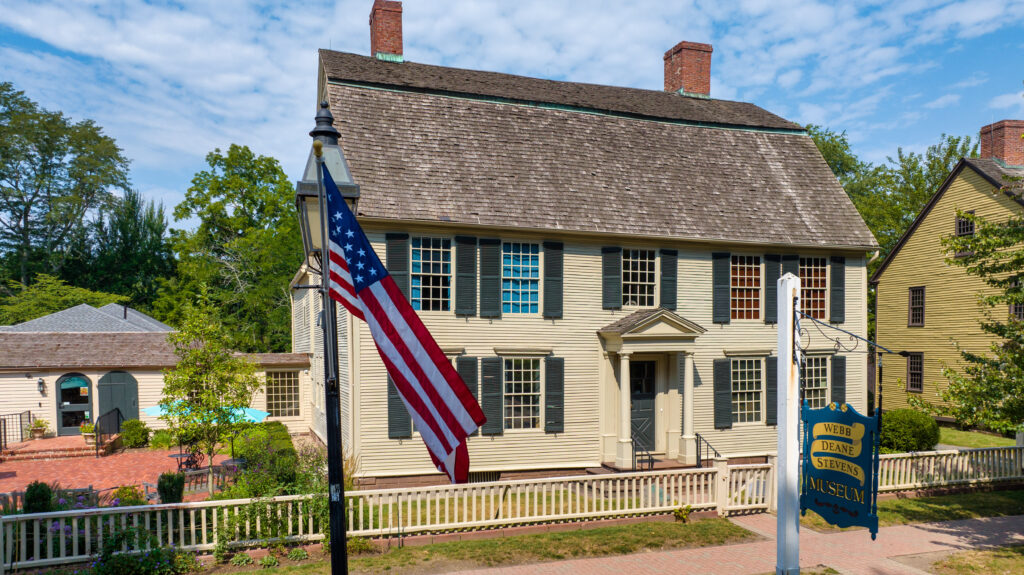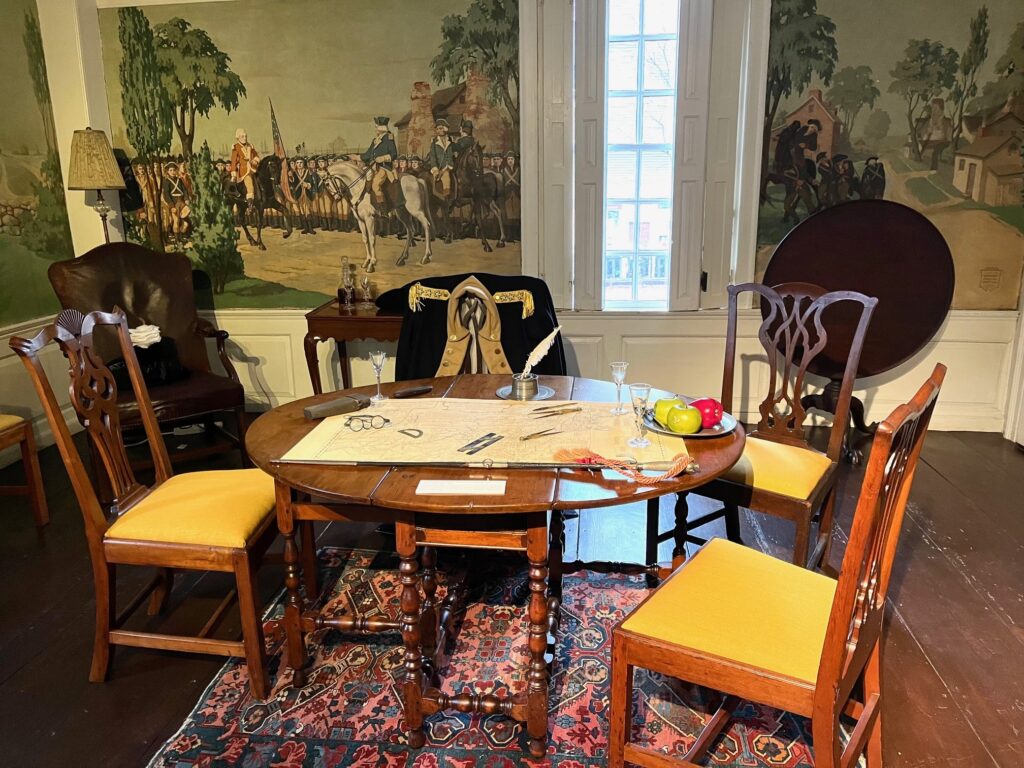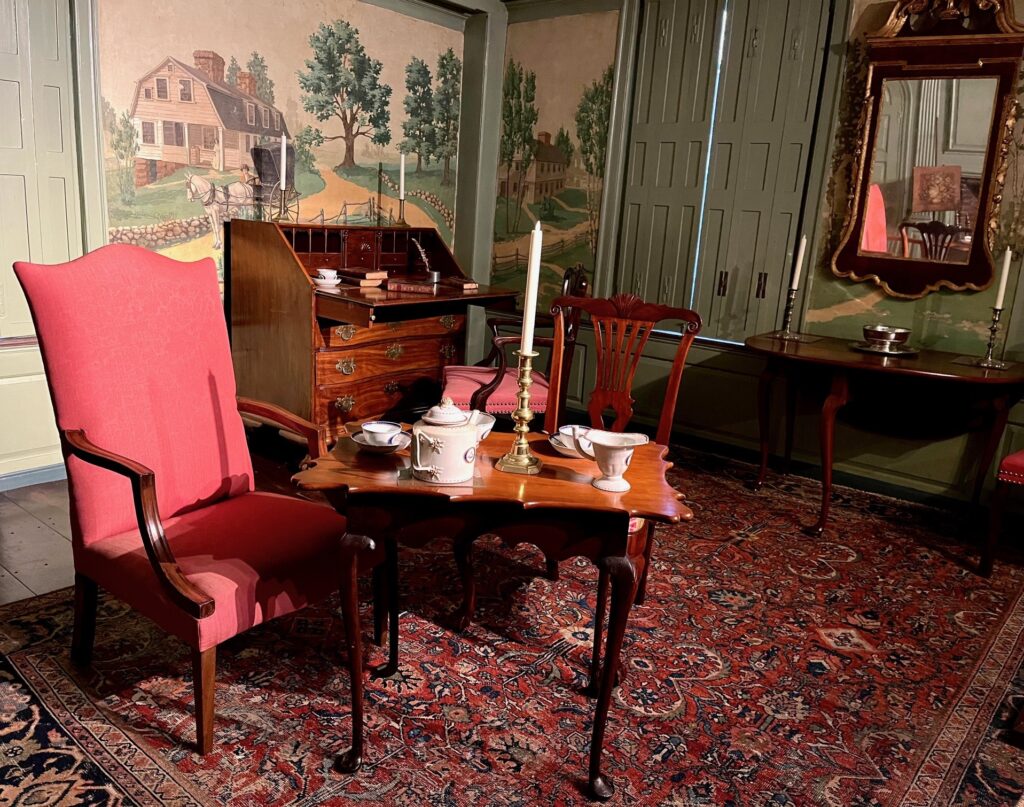Joseph Webb House
The Joseph Webb House (a National Historic Landmark) was built in 1752 and served as George Washington’s headquarters in May 1781. It is where Washington met with French commander, the Comte de Rochambeau, to finalize the joint military campaign that led to the victory at Yorktown, ending the American Revolution. The Webb House was later owned by famous antiquarian and businessman Wallace Nutting, who commissioned murals in the two front parlors and the hallway.
The house was built in 1752 by Joseph Webb following his marriage to Mehitabel Nott in 1749. A young and successful merchant, he hired Judah Wright to frame a stylish three-and-a-half story house and shop with a massive gambrel roof that provided greater upper-floor storage for Joseph’s trade goods. It was also probably used as the sleeping quarters for the household’s enslaved people.
When Joseph Webb died in 1761, the property was inherited by his son Joseph Jr., who married Abigail Chester in 1774. The couple entertained lavishly, earning their home the nickname “Hospitality Hall.” In May 1781, they were the host and hostess when General George Washington spent five nights in the house meeting in conference with Rochambeau.
Due to economic difficulties, Webb was forced to sell the house in 1790. After a series of owners, the house was finally purchased by Judge Martin Welles around1820. He modernized the south half of the house, and it remained in his family until his grandson died in 1913.
In 1914 the Joseph Webb House was purchased by a group of local businessmen who sought to operate it as an athenaeum or library. When they failed to raise sufficient funds, they sold it to Wallace Nutting in 1916. After extensive renovations, including the installation of painted murals in the hallway and front parlors, he opened the house to the public on July 4, 1916, for tours and as a sales area and studio. The Joseph Webb house was one of several historically significant sites in the “The Wallace Nutting Chain of Colonial Picture Houses.” Unfortunately, with the travel restrictions created by World War I, Nutting lost money on the venture. He sold the house to the NSCDA-CT in 1919 to be preserved as a house museum and to serve as their headquarters.



